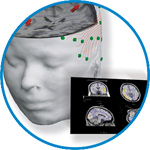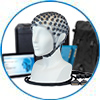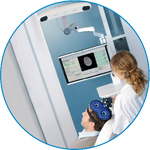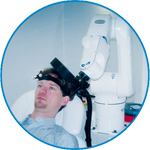- Home
- About ANT
-
Products

asa
asa is a highly flexible EEG/ERP and MEG analysis package with a variety of source reconstruction, signal analysis and MRI processing features.
.jpg)
eego mylab
The new frontier in multimodal brain research. With up to 16 kHz sampling rate, 256 EEG channels and unique software features, eego mylab gives you an unprecedented in-depth understanding of the human brain.

eego sports
eego sports offers complete freedom to collect high-density EEG data, bipolar EMG signals, and a variety of physiological sensor data, wherever and whenever required, with publish quality data in less than 15 minutes!

waveguard net
The waveguard net sets a new standard for research applications requiring high-density EEG data acquisition with quick preparation time, high flexibility, and subject comfort.

visor2
Our new and upgraded visor2 solutions integrate all the latest technologies for navigated rTMS, dual-coil navigation support, EEG-TMS recordings and pre-surgical evaluation for the highest quality in research and clinical procedures.

powerMAG ANT
The PowerMAG ANT 100 rTMS stimulator is designed for the specific needs of high-end TMS applications. Powerful high-frequency TMS as well as high precise single pulse and repetitive pulse protocols are combined in one single device.

xensor
xensor offers the solution for digitization of 3D electrode positions. xensor takes care of the whole procedure; it records, visualizes and stores positions acquired with a dedicated digitizer.

waveguard original
waveguard original is the cap solution for EEG measurements compatible with fMRI, MEG and TMS system. Use of active shielding guarantees performance in even the most demanding environments.

waveguard connect
waveguard connect EEG caps are a perfect match for hospitals and institutes aiming at reliable EEG, maximum uptime and great patient comfort! For optimal signal quality, the electrodes are made of pure, solid tin.

waveguard touch
waveguard touch is a dry electrode EEG cap. The unique Ag/AgCl coated soft polymer electrodes provide stable, research-grade EEG signals while maintaining subject comfort. The combination of these innovative dry electrodes and the industry-leading waveguard cap makes waveguard touch the best solution for dry EEG.

smartmove
smartmove allows planning of a complete TMS session ahead by defining stimulation sites based on anatomical MRI information and functional information like fMRI, PET or EEG/MEG.
Stay - References
- Support
- Events
- News
- Contact Us
You are here
Utilising TMS-EEG to Assess the Response to Cerebellar-Brain Inhibition
Utilising TMS-EEG to Assess the Response to Cerebellar-Brain Inhibition
Cerebellar-brain inhibition (CBI) is a transcranial magnetic stimulation (TMS) paradigm indexing excitability of cerebellar projections to motor cortex (M1). Stimulation involved with CBI is often considered to be uncomfortable, and alternative ways to index connectivity between cerebellum and the cortex would be valuable. We therefore sought to assess the utility of electroencephalography in conjunction with TMS (combined TMS-EEG) to record the response to CBI. A total of 33 volunteers (25.7 ± 4.9 years, 20 females) participated across three experiments. These investigated EEG responses to CBI induced with a figure-of-eight (F8; experiment 1) or double cone (DC; experiment 2) conditioning coil over cerebellum, in addition to multisensory sham stimulation (experiment 3). Both F8 and DC coils suppressed early TMS-evoked EEG potentials (TEPs) produced by TMS to M1 (P < 0.05). Furthermore, the TEP produced by CBI stimulation was related to the motor inhibitory response to CBI recorded in a hand muscle (P < 0.05), but only when using the DC coil. Multisensory sham stimulation failed to modify the M1 TEP. Cerebellar conditioning produced changes in the M1 TEP that were not apparent following sham stimulation, and that were related to the motor inhibitory effects of CBI. Our findings therefore suggest that it is possible to index the response to CBI using TMS-EEG. In addition, while both F8 and DC coils appear to recruit cerebellar projections, the nature of these may be different.

 Read more
Read more.jpg)




